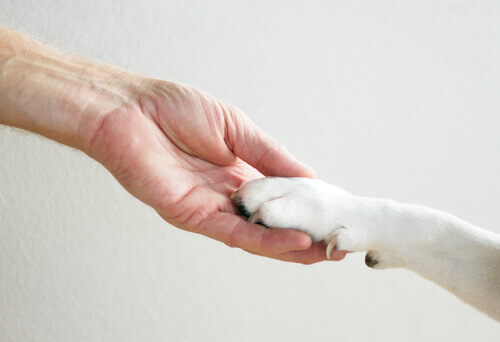Interesting Facts about Animal Paw Pads


Written and verified by the vet Juan Pedro Vazquez Espeso
Humans use shoes as a way to protect their feet, as well as a method of creating traction when they walk or run. However, the fact that we use these items is more about comfort since we could walk perfectly well with pieces of cardboard on the soles of our feet. In contrast, an animal’s survival depends largely on their ability to hunt or escape their prey. As a result, they need a more efficient system than our shoes… and they have one, as paw pads are an evolutionary feat in many ways.
Next, we’re going to talk about some characteristics of this body part. You’ve probably never stopped to think about it, but they have several unique features that will surely be of interest to you.

Anatomy of animal paw pads
Pads are a modification of the skin in both fore and hind limbs. Many pet owners have even touched their pet’s paw pads to see how soft they are.
This is because they have a connective component that serves as a way to cushion the weight of the animal and protect the bones from impact while running or walking. This protection is especially important when animals are running since this exerts more pressure and could cause injuries to bones and muscles.
We should also note that these pads are located on an animal’s toes, or the phalanges. If we had pads on our fingers, we would have them more or less in the middle of our fingers. This is because animals with pads are digitigrade so they support themselves with their toes, rather than the whole foot.
On the outside, these animals have a modified epithelium that protects against damage from the environment, such as scratches or scrapes. However, this tissue isn’t completely invulnerable to injury so we recommend that you avoid walking with your pet in areas with sharp stones or rocks.
In addition, paw patterns with cracks or grooves serve to increase contact with the surface to improve grip and traction. This prevents possible slipping that could lead to injury while running, especially if the animal falls while running from a predator.
Interesting facts
I hope that at this point you’re already interested in these unique features:
- These are fundamental elements for dissipating heat. Pads serve to lower the body temperature of animals through perspiration. For this reason, we recommend that you apply damp cloths to these pads if an animal is suffering from heatstroke. The significant vascularization of the area allows for a rapid temperature exchange with the outside.
- Paw pads are very sensitive areas. Like our fingers, these pads have lots of nerves that make them sensitive to any stimulus, whether tactile or thermal. As a result, it’s best not to walk your dog on hot asphalt in summer heat.
- These pads have pigmentation. Contrary to what you think, these pads are colored. However, they tend to take on a darker hue over time due to friction. In puppies and kittens, their paw pads are almost white.

You can see that these structures are fairly unique and are useful in wild animals, as well as pets.
As a result, we recommend frequently checking and caring for these paw pads. This is especially true for dog owners after a walk. Correct maintenance and cleaning of paw pads help avoid any possible injuries.
This text is provided for informational purposes only and does not replace consultation with a professional. If in doubt, consult your specialist.